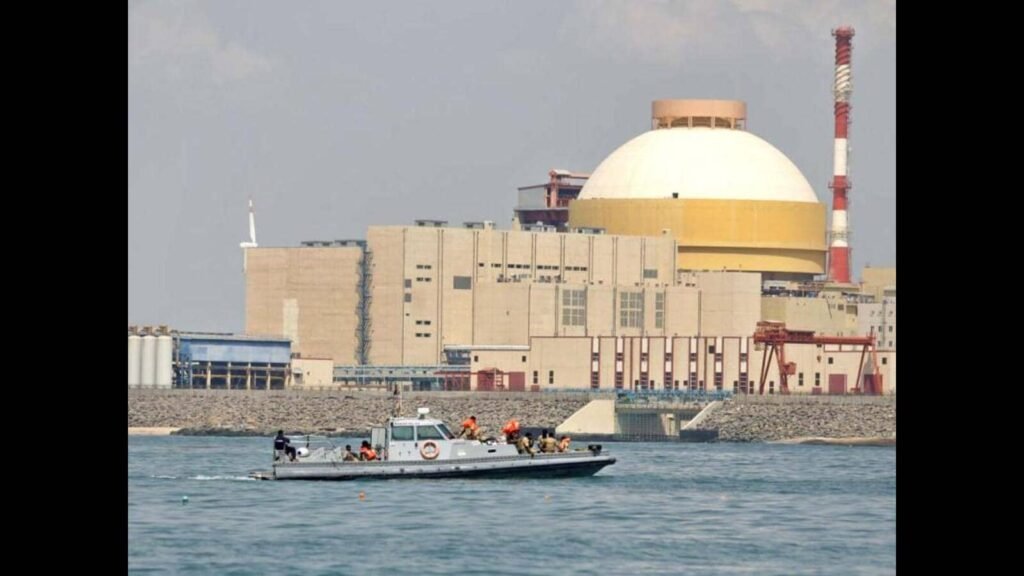
K Ramanathan and Arunendra Kumar Tiwari

India’s Quest for a low-carbon future has been to significant discusations on the role of nuclear energy in achieveing energy security and reducing carbon Emations. The Union Budget has reinforced the government’s net zero vision by introducing a nuclear energy mission with a target of 100 gw by 2047, changes in the Atomic Energy Act and Civil Liability for Nucility for Nuclear Damage Act. E Participation, and A 20,000-crore research and development (r & d) initial for small modular reactors (SMRS). The upcoming World Sustainable Development Summit (WSDS) 2025 is set to shape discussions on the role of nuclear power in India’s energy transition.
Despite Record-High Additions in Renewable Energy (Re) Capacity-Particularly Solar and Wind-The Grid Emission Factor, which has been done on a declining trend from 0.779 TCO2/MWH in 2014-15 to.703 in 2020-21, has Started to Rise Again. According to the Central Electricity Authority (CEA) Baseline Database, It Reached 0.729 TCO2/MWH in 2023-24, Countering Expectations that RE GROWT DROLD DRIVE SUBSTANAL Decarbonization. This Reversal is primarily due to India’s surging energy demand outpacing the expansion of renewables, necessitating containted dependence on coal-based power generation.
Nuclear power offers a stable baseload supply and contributes to grid stability while contributing to Deep Decarbonisation. Unlike Other Energy Sources, Nuclear Provides a High-Capacity Factor, Operates Independently of Weather Conditions, and requires significant Less LANS. Additional, nuclear plants have a long operational life and lower lifecycle emissions, making them a reliable and scalable solution for India’s Clean Energy Transmission.
India’s remarkable success in scaling up solar energy has been worried by Driven by Government Initiatives. If nuclear power is to play a similar role in India’s energy transition, it requires an equally robust policy framework. The Government’s Proposal to Amend the Atomic Energy Act and Civil Liability for Nuclear Damage Act is a welcome step, as these laws have historically restricted private sector participation and forested inVestment . Allowing Private Enterprises and Global Partnerships in Nuclear Technology Development, Financing, and Operation Cold Accelerate Capacity Admission.
Additionally, public awareness and perception need to be addressed proactively. Unlike Solar and Wind, Nuclear Power Often Faces Scepticism due to its legacy of accidents and concerns about radioactive waste. The Private Sector, NGO-LED Outreach and DISSMINATION CAMPAIGNS, And Transparent Communication Regarding Safety Measures, Waste Management Strategies, and The Economic and Environment Benefits of Nuclear Ritical in Garnering Public Support.
The 100 gw nuclear-energy target by 2047 Signals India’s Commitment to Achieving Net-Zero Emissions by 2070. This is a significant leap from the current installed nuclear capacity of 8.2 gw Achieving this target requires strategic investments, International collaborations, and accelerated Deployment of Advanced Reactor Technologies, Including Bharat Small Reactors (BSRS), SMRS, SMRS, Smars.
BSRS, with their safety features and reduced capital costs, present an opportunity to departunity to deploy nuclear power account diverse geography geographic locations, include and INDUSTILAL AARAS. The 20,000-Crore R&D Initiative For SMRS AIMS to Develop at Least Five Indigenous Reactors By 2033, Laying the Foundation for Large-Scale Deployment in the Folling Decades. This movie aligns with global trends, as counters such as the united states, canada, and the united kingdom are investment heavily in smr development. Amendments to the Atomic Energy Act and the Civil Liability for Nuclear Damage Act will pay the way for expanding large-spell nuclear power generation through convental plants (2025-2035) Water Reactors (Phwrs) and Fast Breeder Reactors (FBRS ). Expediting ongoing projects in Kudankulam and Gorakhpur is Essential to Meet Near-Term Energy Demands. Furthermore, deploying bsrs with private sector involvement is key to decarbonising hard-to-Babate sector. Concurrently, scaling up smrs should be prioritized for the 2030-2040 timeframe. This requires government support for early-stage smr development, streamlined regulatory approvals, and incentives to Attract Private Investment in Reactor Development.
Beyond Conventional and Smr Technologies, India must berage its substantiial thorium reserves. From 2035 to 2047, The Focus Shift Towards Fast-Tracking The Three-Stage Nuclear Program, Transitioning from Uranium-Based Reactors to Thorium-Fuelled Advanced Heavy Water Reactors (Ahwrs). This long-term strategy is key to energy independence and sustainable nuclear power generation.
Finally, revisiting the united states- India Civil Nuclear Agreement is vital for fostering interactive collaboration. It will facilitate Technology Transfer, Secure Necessary Financing, and Promote Joint R & D Initiatives. Addressing liability issues related to nuclear damage is also critical. Amendments to Nuclear Liability Laws Must Strike a Balance Between Investor Confidence and Mainting Robust Safety and Accountability Standards. Establishing an Internationally accepted Framework Will Encourage Foreign Firms to Invest in India’s Burgeoning Nuclear Sector.
K Ramanathan is distinguished Fellow, and Arunendra Kumar Tiwari is Associate Fellow, The Energy and Resources Institute (Teri). The views expressed are personal
